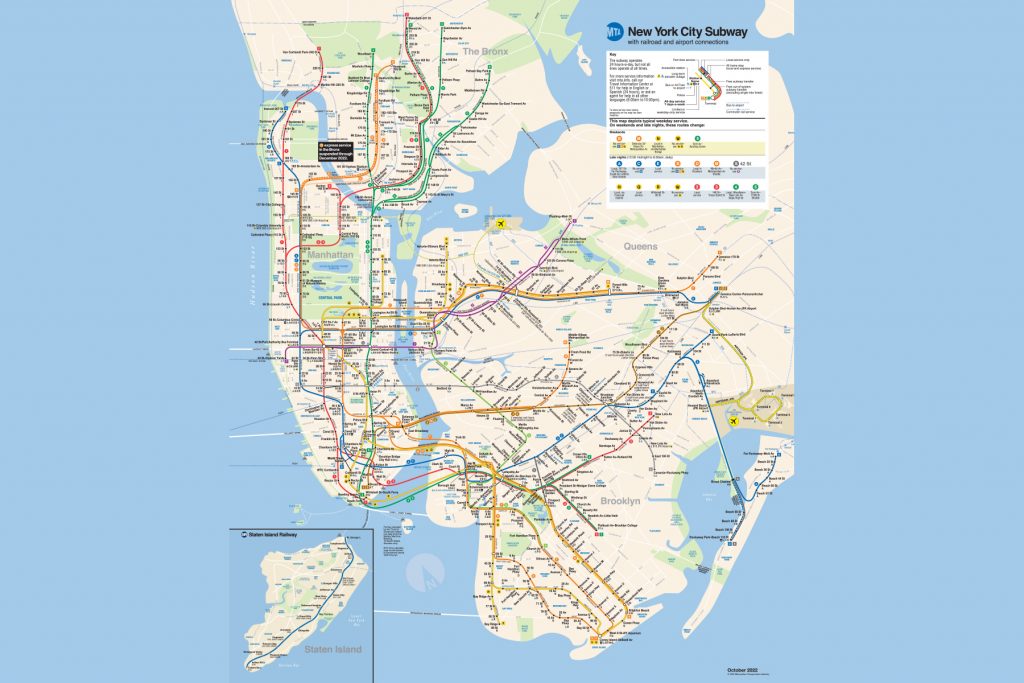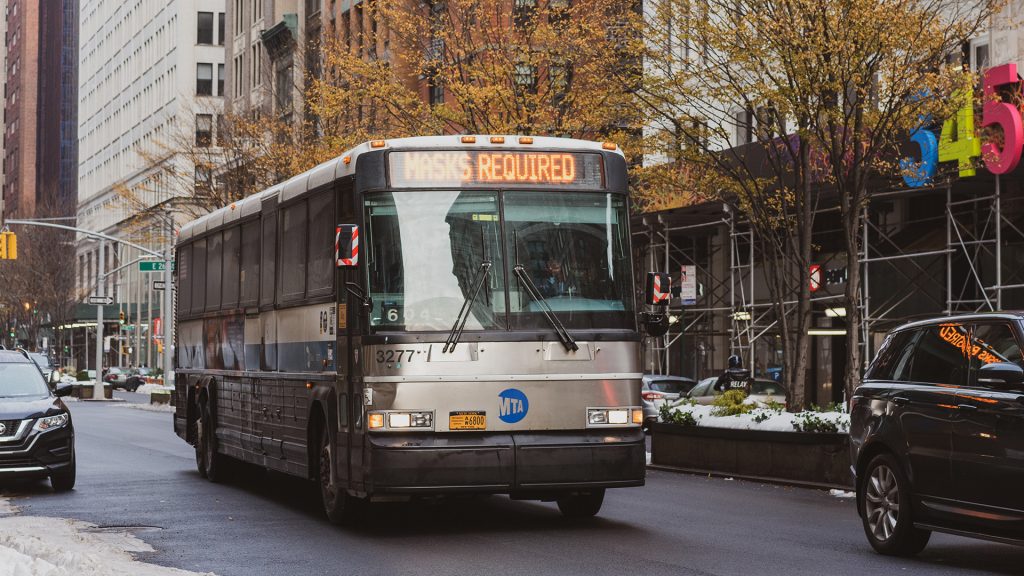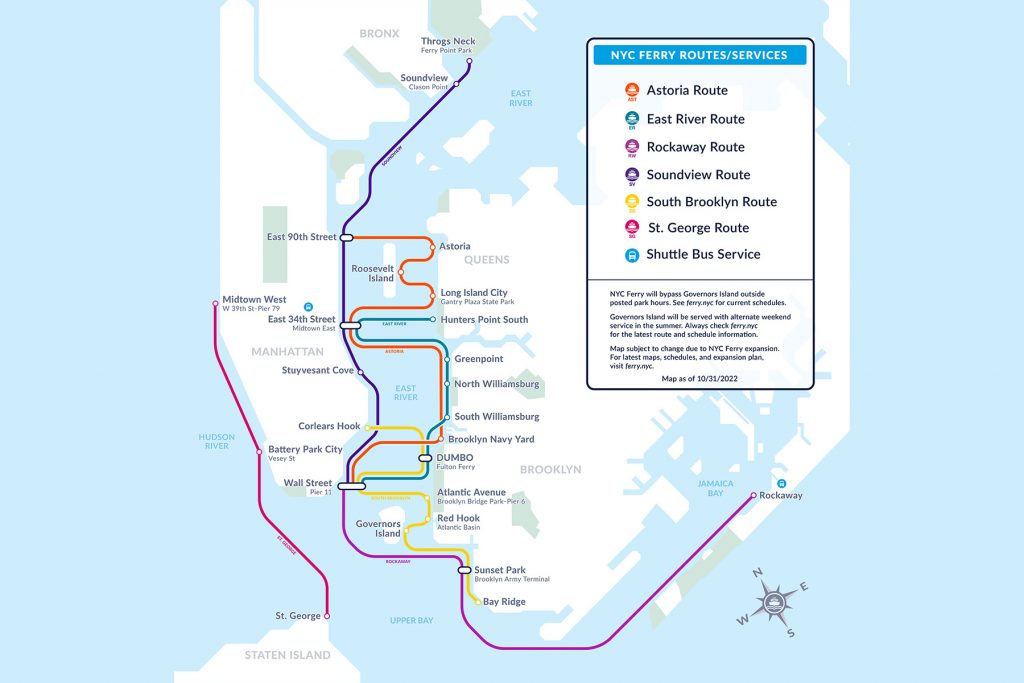The advantages of public transportation in New York City are plenty, but the most common benefits are affordability, time-saving, and flexibility. In NYC, post-pandemic, on average, 3,357,644 New Yorkers utilize the subway system to commute to work, school, and to return home.
But the subway is not the only means of getting around the five boroughs, as there are also ferries and buses. Here is everything you need to know about the public transportation system in NYC, along with important information to improve your riding experience.
In short:
- There is an official app that shows you the times of arrival, along with service changes
- Half-priced MetroCard are available regardless of immigration status for low-income New Yorkers (see how to apply below).
- You can find the closest subway/bus/railroad location here.
- Text New York City Transit via WhatsApp for information about stations and delays.
- After the 12th ride using OMNY, the subsequent rides are free for the week (see more below).
- Beware, service may be delayed or rerouted during the weekends ⚠️.
- Accessibility: Escalator and Elevator Status.
NYC’s Subway, Buses, Staten Island Railway, Ferries
The public transportation system in NYC has been overseen by The Metropolitan Transportation Authority (MTA) since 1965, and it includes all the subway lines, buses, and the Long Island Rail Road (LIRR). It serves 15.3 million people across New York City, Long Island, and other surrounding areas.
The subway has been an indispensable system for New Yorkers since its opening to the general public in 1904, inaugurated under the leadership of then NYC Mayor George McClellan. At that time it was operated by the Interborough Rapid Transit Company (IRT), and it included 28 stations in the borough of Manhattan. It expanded to the Bronx the following year, Brooklyn in 1908, and to Queens in 1915.
Riding the Subway
Known as the largest system in the world, there are currently 472 subway stations within 36 rail lines that serve the four of the five boroughs. Each service line has its own letter, and color– there are also shapes designated to tell the rider if a service is express (diamond) or local (circle).

You can check the cost to ride the subway here and it can be paid contactless through OMNY by tapping a debit/credit card/phone at the turnstiles, or by purchasing a physical MetroCard at one of the vending machines in the station. There is a $1.00 fee for purchasing a physical card, but it gives you the option to purchase an unlimited ride 7-day ($33) or 30-day ($127) MetroCard.
After the 12th OMNY paid ride, the following rides are free for the rest of the week.
The closest subway station can be found here | Accessible Stations | Subway Map
Staten Island has its own rail lines and is operated by the Staten Island Railway (SIR), a subsidiary of the MTA. It is also the only borough that is not connected to the subway system. It is encompassed by 21 station commuter lines, and accepts MetroCard or OMNY– the price is the same as riding the subway or buses in the other boroughs. More information about public transportation in Staten Island.
Riding the Bus
Also operated by the MTA, buses in NYC cost $2.75 per ride and accept the same payment methods as its subway counterparts (OMNY and MetroCard), along with coins. There are 327 bus routes across the five boroughs, 234 routes are local. All buses are wheel-chair accessible and can the closest boarding station can be found here.
Select Bus Service (SBS) buses make fewer stops, travel on priority routes, and board at all doors.

Express buses run between boroughs and operate mostly during weekday rush hours. They look like coach buses. They cost $6.75 for most riders, and cannot be paid using an unlimited ride MetroCard.
Things to keep in mind: weekend service may cause delays, or reroutes. Text the MTA via WhatsApp to inquire the latest information.
New York City Ferries
Another way to commute within boroughs is using NYC’s ferries. It is operated by Hornblower Cruises and it connects 25 piers across six routes around the five boroughs. The cost to ride the ferry is $4.00 for an Adult One-Way Pass and $27.50 for a 10-Trip-Pass.

Ferry tickets can be purchased through the NYC Ferry by Hornblower App, in person at a vending machine, or through a Ticket Agent.
These are all the locations and schedules.
Reduced-priced MetroCards for New York residents
Low income New Yorkers can apply and receive a 50% discount on subway and eligible bus fares through NYC’s program Fair Fares. To date more than 271,060 New Yorkers have enrolled in the program. It is available to New Yorkers regardless of immigration status.
To qualify, individuals must be between the ages of 18 and 64, live in one of the five boroughs, and meet the annual income requirement.
Eligible New Yorkers can submit their application online or through the Access HRA Mobile App. An email address will be required to submit the application.
Note: proof of income, address and identification documents will be required during the application process.
Also read: Organizations Serving Immigrants in New York










